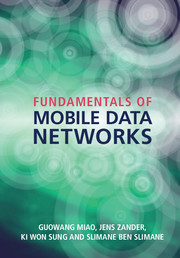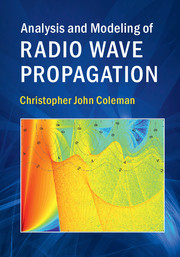Essentials of Radio Wave Propagation
If you need to maximize efficiency in wireless network planning, an understanding of radio propagation issues is vital, and this 2007 reference guide is for you. Using real-world case studies, practical problems and minimum mathematics, the author explains simply and clearly how to predict signal strengths in a variety of situations. Fundamentals are explained in the context of their practical significance. Applications, including point-to-point radio links, broadcasting and earth-space communications, are thoroughly treated, and more sophisticated methods, which form the basis of software tools for both network planning and spectrum management, are also described. For a rapid understanding and insight into radio propagation, sufficient to enable you to undertake real-world engineering tasks, this concise book is invaluable for network planners, hardware designers, spectrum managers, senior technical managers and policy makers who are either new to radio propagation or who need a quick reference guide.
- Quick practitioner guide to a complex technology
- Concise and highly practical treatment
- Uses real-world case studies and minimum mathematics, making the topic very accessible
Product details
January 2008Adobe eBook Reader
9780511368073
0 pages
0kg
81 b/w illus.
This ISBN is for an eBook version which is distributed on our behalf by a third party.
Table of Contents
- Preface
- 1. Propagation in free space and the aperture antenna
- 2. Point-to-area transmission
- 3. The effect of obstacles
- 4. Reflection, scatter and penetration
- 5. Estimating the received signal strength in complex environments
- 6. Atmospheric effects
- 7. System design and interference management
- 8. Software-based tools
- 9. Summary
- Appendix: A1. The decibel scale
- A2. Phasor arithmetic and phasor diagrams
- A3. Formula sheet
- A4. Explanation of link budget
- Bibliography
- References
- Author's biography.






